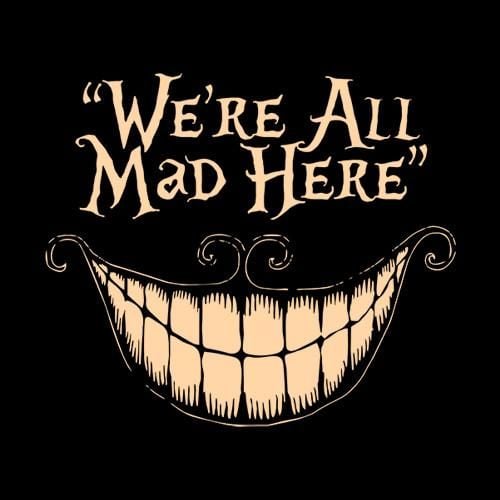I know a lot of languages have some aspects that probably seem a bit strange to non-native speakers…in the case of gendered words is there a point other than “just the way its always been” that explains it a bit better?
I don’t have gendered words in my native language, and from the outside looking in I’m not sure what gendered words actually provide in terms of context? Is there more to it that I’m not quite following?
[Shameless comm advertisement: make sure to check [email protected], this sort of question fits nicely there!]
There are two main points: agreement and derivation.
Agreement: grammatical gender gives you an easy way to keep track of which word refers to which. Consider for example the following sentence:
- The clock fell over the glass table, and it broke.
What does “it” refer to? It’s ambiguous, it could be either “the clock” or “the glass table” (both things are breakable). In Portuguese however the sentence is completely unambiguous due to the gender system, as the translations show:
- O relógio caiu sobre a mesa de vidro, e ele quebrou. // “ele” he/it = the clock
- O relógio caiu sobre a mesa de vidro, e ela quebrou. // “ela” she/it = the table
It’s only one word of difference; however “ele” he/it must refer to “relógio” clock due to the gender agreement. Same deal with “ela” she/it and “mesa” table.
Latin also shows something similar, due to the syntactically free word order. Like this:
- puer bellam puellam amat. (boy.M.NOM pretty.F.ACC girl.F.ACC loves) = the boy loves the beautiful girl
- puer bellus puellam amat. (boy.M.NOM pretty.M.NOM girl.F.ACC loves) = the handsome boy loves the girl
Note how the adjective between “puer” boy and “puella” girl could theoretically refer to any of those nouns; Latin is not picky with adjective placement, as long as it’s near the noun it’s fine. However, because “puer” is a masculine word and “puella” is feminine, we know that the adjective refers to one if masculine, another if feminine. (Note: the case marks reinforce this, but they aren’t fully reliable.)
The second aspect that I mentioned is derivation: gender gives you a quick way to create more words, without needing new roots for that. Italian examples:
- “bambino” boy vs. “bambina” girl
- “gatto” cat, tomcat vs. “gatta” female cat
- “banana” banana (fruit) vs. “banano” banana plant
- “mela” apple (fruit) vs. “melo” apple tree
Focus on the last two lines - note how the gender system is reused to things that (from human PoV) have no sex or social gender, like trees and their fruits. This kind of extension of the derivation system is fairly common across gendered languages.
Addressing some comments here: English does not have a grammatical gender system. It has a few words that refer to social gender and sex, but both concepts (grammatical gender and social gender) are completely distinct.
That’s specially evident when triggering agreement in a gendered language, as English doesn’t do anything similar. Portuguese examples, again:
- [Sentence] O Ivan é uma pessoa muito alta.
- [Gloss, showing word gender] The.M Ivan.M is a.F person.F very tall.F
- [Translation] Ivan is a very tall person.
Check the adjective, “alta” tall. Even if “Ivan” refers to a man, you need to use the feminine adjective here, because it needs to agree with “pessoa” person - a feminine word. This kind of stuff happens all the time in gendered languages, but you don’t see it e.g. in English.
Holy smoke, thanks for taking the time to write this comment. I wasn’t aware there are practical implications of using gendered nouns. Learned something new today.
Really great comment, thank you for the effort you put into this. That said, I can’t say I feel convinced by the reasoning. Are you suggesting that gender in these languages was an intentional decision to solve the problems you raise? Because as other comments point out, it seems it’s still very possible to have an ambiguous sentence making this seem like an overly confusing addition.
Secondly in your example of gendered language assisting in derivation, surely this ends up with the same problems given that the language only represents a limited number of genders? I do not remotely know Portuguese, but how does this derivation quality help with the word for an apple seed? I presume the same logic can’t apply?
Thanks for your time!
you suggesting that gender in these languages was an intentional decision to solve the problems you raise?
No, I’m not suggesting intention or decision. Most of the time, language works a lot like a biological species: there’s no critter or speaker deciding “we shall have this feature!”, but instead the feature spreads or goes extinct depending on the role that it performs in the language, alongside other features.
My explanation is all about that role. That is the point of grammatical gender, and it explains:
- why it appeared independently across different languages? Clearly the gender systems in Dyirbal, in most Indo-European languages, in [most?] Afro-Asiatic languages are unrelated to each other, but why did they develop that same feature?
- why it survives for so long in a language? For example, the gender system in Russian, Hindi and Spanish backtracks all the way back into Late Proto-Indo-European (6000? years ago).
A pointless feature wouldn’t do it.
I do not remotely know Portuguese, but how does this derivation quality help with the word for an apple seed?
The fruit vs. plant example is from Italian, not Portuguese (see note*).
It doesn’t need to help with the word for an apple seed (IT: seme di mela, lit. “seed of apple”). It’s just an extension, a “bonus” of the system; the core is like bambino/bambina, words referring to human beings, we humans tend to speak a lot about each other.
That said, your question reminds me the noun classes of Bantu languages. Gender is just a specific type of noun class; it’s possible that some language out there would actually use a noun class derivation of their word for apple to refer to apple seeds.
*note, on Portuguese
Fruit trees in Portuguese get an “origin” suffix, -eira; see e.g. maçã (apple) vs. macieira (apple tree) vs. semente de maçã (apple seed). There are a few nouns where the feminine is a specific type of the masculine, like
- ovo (egg) vs. ova (fish eggs)
- casco (shell) vs. casca (bark, peel)
- jarro (jar) vs. jarra (a type of jar, usually with a pointy lip)
- barco (boat) vs. barca (barque)
but that feature was only rarely used, and it is certainly not productive; I think that it backtracks to Latin neuter but I’m not sure. Anyway, derivation in the modern language is mostly restricted to critters and people.
Thank you, Today I learned that grammatical gender can in fact have purpose. Some questions though:
In that first example for Agreement, does this depend on the nouns in question coincidentally having different gender, or does the grammar enforce that? (Such as switching one if they would otherwise match - although that might conflict with the Derivation thing.) And can a sentence in those languages refer to 3 or more nouns? That would seem to break the disambiguation effect.
does this depend on the nouns in question coincidentally having different gender
Yup - the example wouldn’t work if both nouns had the same gender. And gender is intrinsic to the noun, you can’t change it (you can change the noun though).
That’s why, usually, languages with a productive gender system keep a comparable amount of nouns in each gender, since this maximises the odds that multiple nouns in the same sentence got different genders.
And can a sentence in those languages refer to 3 or more nouns?
Yup, they can.
In both cases (same gender nouns, or 3+ nouns), the solution is typically the same as in a non-gendered language: you use the noun instead of a pronoun, or rely on context to disambiguate it.
Just here to say I love you and I subscribed to [email protected].
That was very informative, thank you! I learned a bit of Esperanto, and I think Zamenhof was really aware about the derivation part. It really makes learning a new language easier if words with a similar meaning share a root.
Speaking one language that is mildly gendered (English), two that are strongly (and in the case of the second bizarrely!) gendered (French, German) and one that is almost entirely ungendered (Mandarin), I have not found any utility whatsoever in grammatical gender.
I suspect that grammatical gender is just an ur-form of grammatical classifiers that has stuck around for non-useful amounts of time. I suspect this because one of the grammatical “gender” divisions that’s in use in many languages isn’t masculine/feminine(/neuter) but rather animate/inanimate. So I suspect that grammatical gender was a classification mechanism whose system and utility was distorted into uselessness over the thousands of years of spread and development.
So why do we have classification mechanisms? Well, in Mandarin there’s classifier words. (In English too: “a sheet of paper”, not “a paper”, but it’s waaaaaaaaaaaaay stricter in Mandarin.) The classifiers in Mandarin, given the sheer amount of punning potential in oral language, are likely a redundant piece of information to help nail down which specific word you mean in contexts where it might be unclear. For example in a noisy environment, or if someone is speaking unclearly, “paper” (纸张[zhǐ zhāng]) might be confused with “spider” (蜘蛛 [zhī zhū]). But if I say 一只蜘蛛 [yī zhī zhī zhū]—a spider—it’s harder to confuse that with 一张纸张 [yī zhāng zhǐ zhāng]—a piece of paper.
So I’m positing that perhaps at some point grammatical gender was used as a primitive form of classification for disambiguation that some languages just never grew out of. Which is why in German men are masculine, women are feminine, boys are masculine, and girls are neuter. It has nothing to do with actual physical gender and is just a weird, atrophied, and somewhat useless remnant of language.
Thanks for the explanation!
If I may, what do you mean by English being mildly gendered?
English has gendered pronouns, for example. There’s also some gender divides in nouns: actor/actress, for example. (These are slowly being replaced, however.)
Languages like Farsi and Mandarin and such don’t. The only difference in pronouns, in fact, with Farsi is “courteous” vs. “common”. And even that isn’t happening as much as it used to. And the only time nouns are gendered is if the item they’re talking about has an actual physical gender. Like “man” or “woman”. There are no gendered declensions of any kind, in fact.
It’s more complicated in Chinese. In oral Chinese there’s no gendered pronouns. It’s pronounced [tā] whether you mean man, woman, or other.1 As with Farsi, however, there are no gendered nouns outside of those describing literal physically-gendered things. And unlike Farsi, not only are there no gendered declensions of any kind, there are hardly any declensions of any kind2.
1 In written Chinese, for complicated reasons, there are three different pronouns in common usage: 他 for masculine (he), 她 for feminine (she), and 它 for everything else (it). This “modernization” was first proposed in the very late 19th century and came into its final form sometime in the 1920s. It was a deliberate attempt to make Chinese easier to translate into western languages (and since at the time the Chinese had somewhat of an inferiority complex it was also couched as making Chinese a “modern” language). (There were a couple of others added, including one for deities and one for animals, but those never caught on and are hardly ever seen in modern Chinese.)
But they’re all pronounced the same: [tā].
And now, full circle, Chinese is “modernizing” again. While official laws, forms, scholarly papers, regulations, etc. use that three-way split in pronouns, increasingly in commercial settings (like the world’s largest digital souq: Taobao) all pronouns are being replaced with “TA”. Yes. Latin letters. Uppercased.
This I find completely hilarious: Chinese developed gendered pronouns (in writing only!) to soothe western tastes … only to pick up an ungendered pronoun again … to match western tastes. And before westerners have solved the problem themselves in their own languages!
2 Chinese does not decline for number except for a tiny handful of cases you can learn completely in 30 minutes. (And even here it’s not quite ‘declension’ like that word applies in the Indo-European family of languages.) There’s no “car” vs. “cars”. They’re both 汽车. If you want to specify that you mean more than one car, you would modify it by saying “some” or “three” or whatever in front of it: 一些汽车 [yī xiē qì chē], literally “one (small number) car” or “some cars”.
Thanks for the very educational reply! If you have some blogs or something i’d love to hear more analyses on languages like these
I never knew they’re using TA again, that’s so funny. Do you know how they used to write it? Why not just return to that? I’m sure written standard pronouns existed before “modernization”.
The original form is the current “he”, so returning to that would be problematical.
Regarding the paper analogy,
Paper is a material, not a discrete object. A sheet is an object, but is ambiguous until you quantify what is it a sheet of.
You could have a sheet of paper, or metal, or pasta.
A page would be a way to say a sheet of paper as an object.
I’m sorry that the Chinese classify things differently from you. I’ll get right on asking them to change it to suit your thoughts. (As it so happens, the classifier 张 is, in fact, “flat objects”. Fancy that! Perhaps reading what I actually wrote instead of what you wanted me to write so you could “well akshually” me might be an advantage.)
I’m reporting what is, not recommending.
All good man,
I was just talking about your analogy using the English language, and how it seem like a false comparison. I wasn’t commenting on the Chinese. No need to be rude.
What. Fucking. Analogy?
There is no point!
Languages evolve. They are not invented, designed, engineered by people. Human language evolved just like the human body evolved, just like the genome and the microbiome evolved.
There’s probably more to it but the more isn’t the sort of thing that could be explained in documentation.
What I mean by the more isn’t super clear to me. I’ll just say I didn’t fully grasp the Spanish language, which I had studied and spoken for many years, until I smoked a joint with a Swiss girl in college and we listened to some songs being sung in Spanish. All of a sudden I realized there are things you can express in Spanish that you can’t in English.
That may or may not have to do with it being a gendered language; I don’t know. I don’t even know what it is that I saw. I just realized there was some parallel thread running beside the string of words, that I don’t have in English. That you can’t do in English.
i don’t know if it’s just me, but someone getting told off in Spanish is so much harsher than in English. like, it’s another level. someone can tell me off in English, and it’ll roll right off of my back. but, if some one tells me off in Spanish, it hits my heart.
Residente has a song (La Càtedra) that is BRUTAL in Spanish. when i try to tell my English-speaking friends the translation, it doesn’t hit any where near as hard.
What we call “grammatical gender” in Indo-European languages is a worn-down version of a noun class system. English’s is extremely worn-down; we only use gender on pronouns, whereas many other European languages use it on articles and adjectives with all nouns.
Some other language families have much more complicated sets of noun classes. Dyirbal has four (roughly: masculine, feminine, edible, and other). There’s a language in Georgia with eight, including two dedicated to body parts. Swahili has eighteen (and both adjectives and verbs are inflected to agree with nouns).
Meanwhile the Uralic languages (including Finnish and Hungarian) don’t have noun classes, not even gendered pronouns.
In languages with noun classes, it’s common for the words for “man” and “woman” to belong to different noun classes. And when we say “this word has feminine gender” all we’re really saying is “this word is in the same noun class as ‘woman’.”
English’s is extremely worn-down; we only use gender on pronouns, whereas many other European languages use it on articles and adjectives with all nouns.
It’s also worth noting that even those gendered pronouns in English work differently. Since they don’t have a grammatical gender system to rely on, they “hot-wire” to things outside language, such as social gender and sex.
Learn Indonesian/Malay. They are the most logical and uncluttered language around. No bullshit grammar and spelling rules.
Language is just specific expression. It evolves alongside the human brain as we become more and more socially complex, we needed to be able to express ourselves or information to each other which wasn’t easy with things like grunts and pointing. Things like facial expressions are some of the earliest examples of pre spoken language, with which one could express emotion, as it is not only the foundation of humanity’s perception, but also effective at giving others enough info to infer where to look for something. This could be why it is so innate a language within the human mind that even people across different cultures can comprehend. But even that isn’t enough to express everything and so eventually spoken then written language evolved, allowing us to be specific with each other and allowed us to evolve into societal beings rather than pack animals. Each type of language has its own quirks from its evolution, and will continue to evolve. Some languages allow specificity in ways incomprehensible to those who don’t understand the language itself, gendered languages being one such example. A gendered language allows one to apply societal constructs and in a way stereotypes to objects in a way that allows metaphor to imply information. Another more mundane example of this same type of implicit metaphor that may be better understood by one who doesn’t speak such a language is tone. This is implied just as facial expression implied what spoken language would one day become. It will be a wonder to see where language evolves in the future, especially as technology augments our ability to transfer and encode information, as all any of that really is is just information.
EDIT: Just fyi I did make all this up and have no qualifications to say any of this, but it seems right and accurate so please someone prove me wrong, otherwise I will assume my deductions are correct.
Disclaimer: Joke!
To help native speakers identify foreigners.
I’m not fluent in any gendered languages, but afaict in many situations pronouns are removed in favor of a gendered suffix, shortening phrases.
There is some debate in France about gendered profession names. Conservative want them removed. Feminists are asking for a neutral form. Regular language usually has gender for them.
In terms of utility, it adds information in a tight way. When you use the gendered name, you add the information about the gender of the person. When there is a neutral form, you can also choose to not give this information.
Obviously when your language doesn’t give you this possibility it’s harder to get used to it. From my perspective I’m sometimes put off by the lack of specificity and accuracy, or by the ambiguity of the English language.
It makes some sense for people-related words like a person’s’ occupation. Why are objects gendered though?
This I don’t know but I would suspect it’s a mix of poetry, usage, and the Latin root, at least in French.
No, it’s just how it’s always been, same with all the other grammar constructs like stemming, prepositions, anything. Often it doesn’t convey any additional information and it’s just a bitch to learn.
I mean, if your native language (or one you know very well) has gendered nouns, you may tend to think of inanimate objects as male or female - not all the time, but say, when writing poems and such.
Research also shows that we tend to associate inanimate objects with gendered qualities based on language. So if in your language “bridge” is male, you’re more likely to associate bridges with being strong and tough, while someone whose language has female bridges tends to think of them as lean and elegant. It’s a bit of a feedback loop that way.
But logically, no, no real reason or meaning. When adapting foreign words into the language, the tendency is to follow the habits of the receiving language. Such as if in your language most female nouns end with -a, then you’ll probably use new words ending with -a also in the context or grammar of female gender.
Ed: obviously there’s meaning if it refers to people, e.g. if “customer” has two variants based on gender - that’s additional information of the actual gender of the person. Of course then there’s the opposite issue if the gender of the person isn’t known. Usually there’s a fallback of some sort.
The research you are basing your third paragraph on was actually never published and its claims have remained controversial.
I recommend you check this great video on both grammatical gender and Boroditsky’s article: https://www.youtube.com/watch?v=1q1qp4ioknI
Ah okay. I just vaguely remember reading about it ages ago. But as someone whose native language is gendered, I do agree with that assessment at least to a degree. Nouns do have certain tone to them which generally corresponds to their gender as well, such as what I mentioned, words ending with -a usually being feminine and just having that softer vibe than words ending on a consonant. Tho that depends on the particular language of course.
And I wouldn’t underestimate the feedback loop from language to thinking in general. For example it’s well documented how we remember colors is quite dependent on how they’re named.
Well unless that was debunked as well, but considering both linguistics and art are my hobbies, that might shatter my entire world view heh.
Even though the main reason is that it’s allways has been so, I can see two minor arguments that haven’t been said here yet:
- The gender of some words may vary between different regions (still within one language), so used gender gives you aditional information about the speaker.
(From Czech perspective this is not really a thing, becouse before you stumble across one of the few words that have this property, you can usually estimate the origin of the speaker by another signs.) - By asigning a gender to animals, you’re proner to percieve them as living persons, compared with a language that classifies them as inanimate (English, “it”).
(I am not backed by any scientific study here, it’s only my feeling; and you could also claim that better solution would be ungendered language without animate/inanimate distinction, or classifying animals as animates.)
- The gender of some words may vary between different regions (still within one language), so used gender gives you aditional information about the speaker.
Long ago, and I mean very, very long ago, in all cultures, when you named a child, the name would be derived from the language, something still common in the main Asian languages. Of course, when you have a name system, you need to separate names by gender, so they would separate their dictionary by gender. Over time, however, names became separate from words (so we got people named, for example, “Johnny Smith” instead of “Cloud Bridge”) and the gendered rule just stuck around (furthermore it explains why Western cultures are accustomed to naming kids after relatives, because we no longer have the whole baby name book at the top of our heads because it’s separate from the dictionary). This means, no, it won’t ruin the language ecosystem to simply remove the gendered rule.










